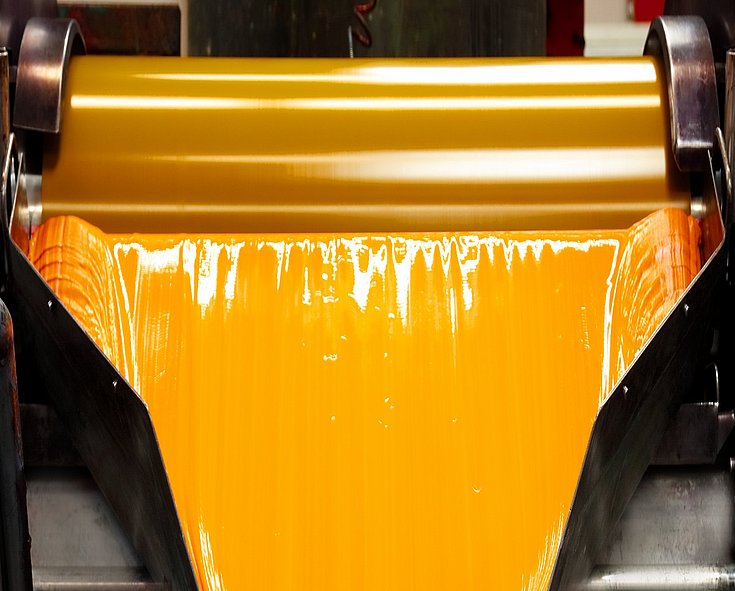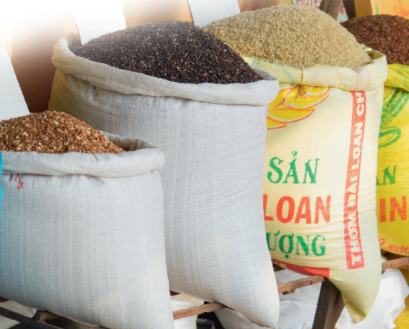
Colors are passion, emotions and personality. At Siegwerk, inks and coatings are our specialty and we use color to bring the packaging and products of our customers to life.

Woven sacks have long been a proven method of packaging rice, flour and other types of cereals and are used very frequently, particularly in Asia and Africa. Woven polypropylene-based (PP) bags are already in use as resilient carrier bags in supermarkets here in Europe. Essentially this type of packaging is based on a roughly 20μm thick Coex OPP film, which is usually coated either by extrusion or, more rarely, by adhesive lamination using a woven PP film. During extrusion, a melt deposit consisting of a PE/PP polymer mix provides the adhesion between the two films.
Basically, this structure is perfect for reverse printing. However, except in the case of a few toluene-based gravure-printing inks, extrusion has tended to reduce the effectiveness of flexo ink/polymer adhesion. In particular, weak bonding forces between film layers and therefore potential delamination (poor adhesion) represent a high risk. For this reason, woven PP sacks are mainly surface-printed during flexo printing processes, although this severely limits the packaging’s mechanical resilience and design options.
Advantages of the new ink system
In light of the above, Siegwerk has now developed a new ink system including colors, white and an extrusion-compatible lacquer to overcome the previous limitations of the woven PP sack printing process. The new toluene-free ink solution is based on NC 169-1, the typical nitrocellulose-based ink technology, which like white and lacquer complies fully with European food packaging regulations. The innovative ink system does not damage photopolymer plates and is ideal for HD flexo printing, as it also enables sophisticated designs to be printed. This user-friendly innovation offers printers clear benefits: no additives at the press, reusable return inks, unimpaired plates and good adhesion. The new colored ink system is also suitable for NC-based master-batch inks mixed using a dosing system. Finally, this new ink system opens up entirely new applications and branding opportunities, especially given the high quality of its print results and high adhesion values, which deliver outstanding packaging resilience.
Appealing benefits of the new solution: